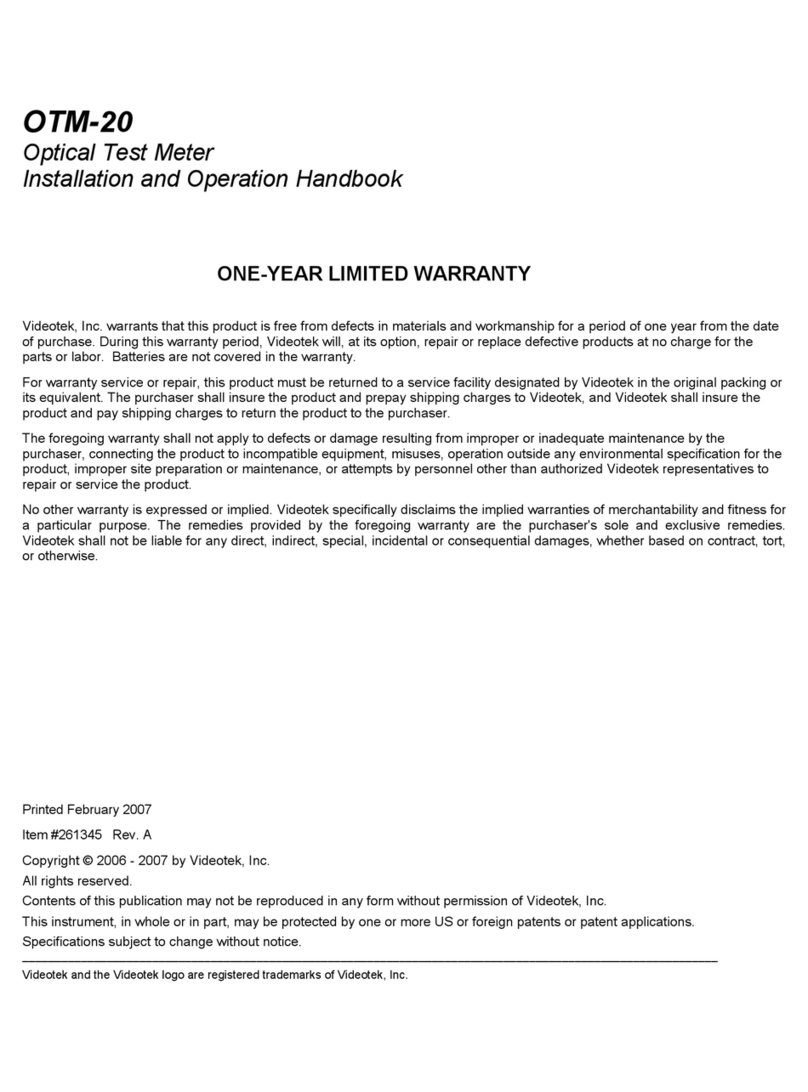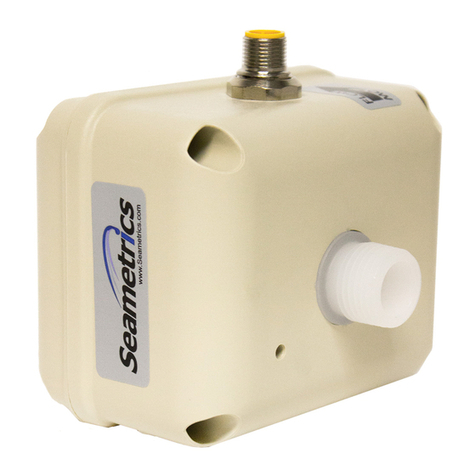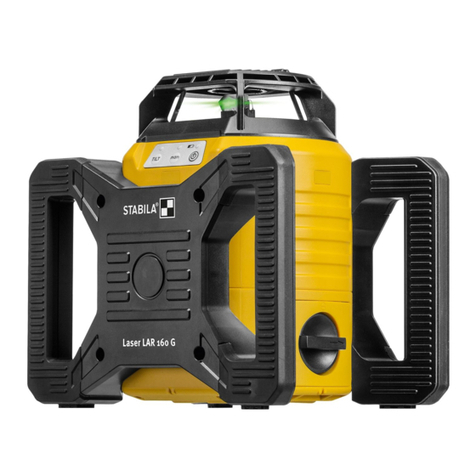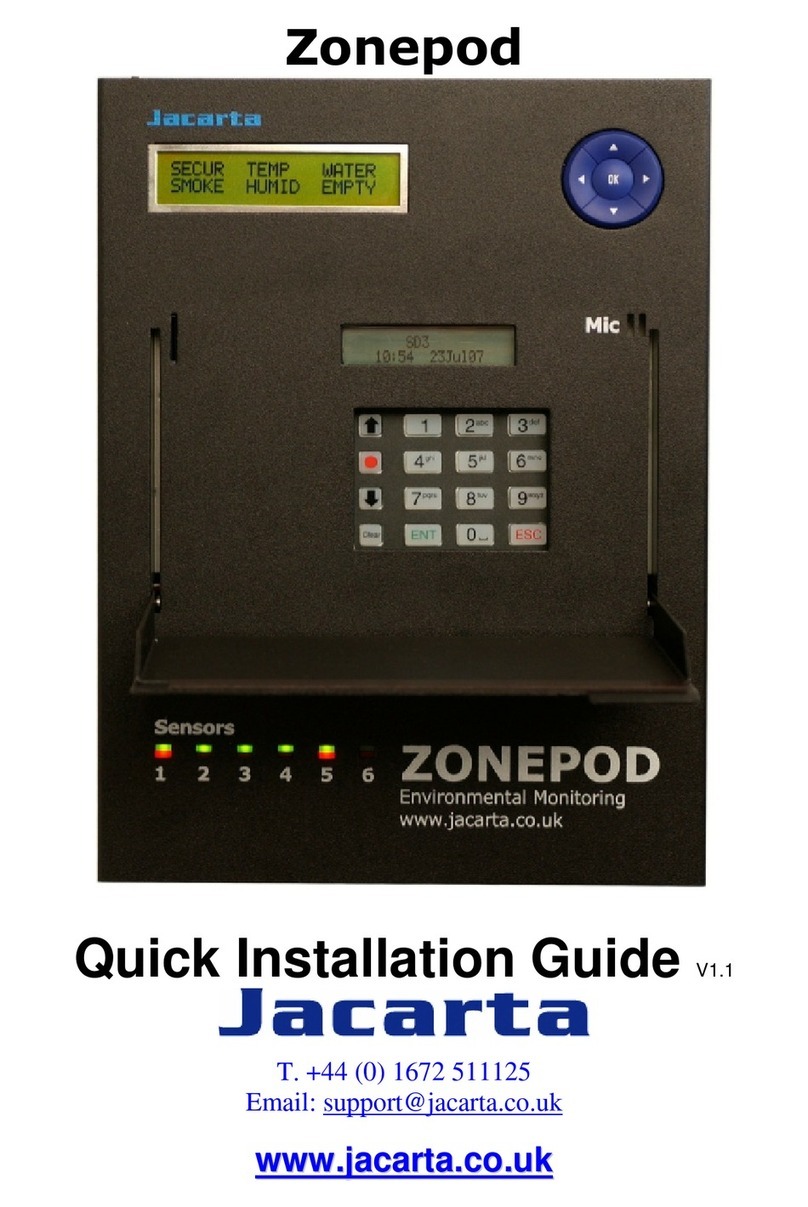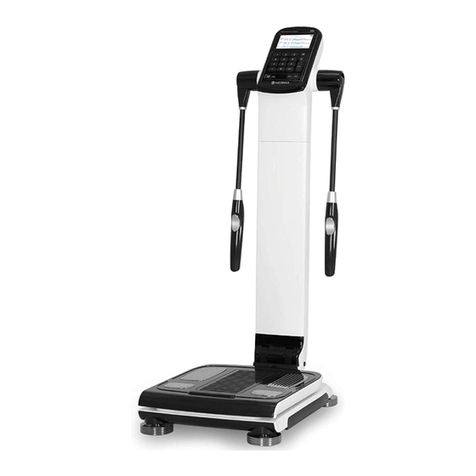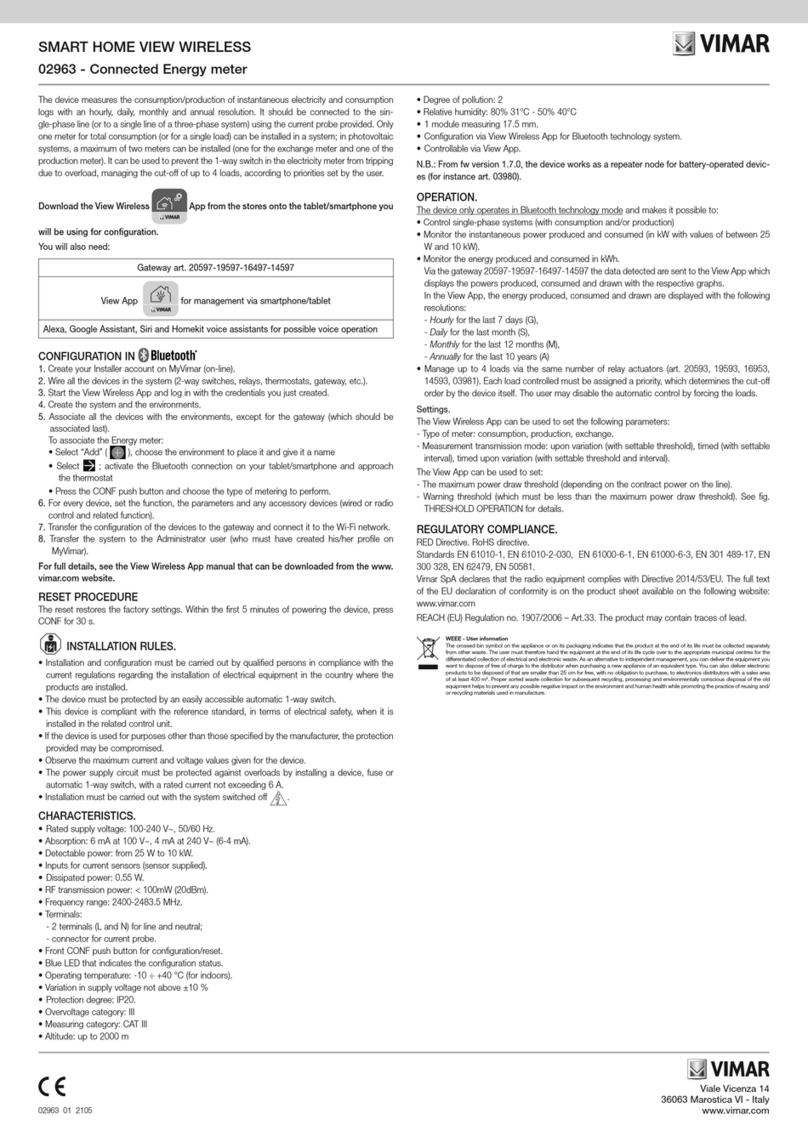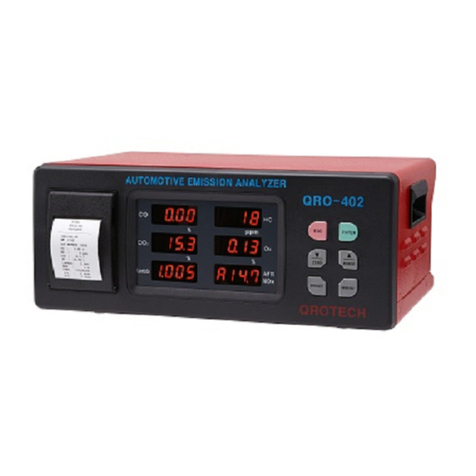Harris STM-1 User manual

www.SteamPoweredRadio.Com
m
HARRIS
STM-1
AM
Stereo
Modulation
Monitor
·• Meets FCC AM Stereo modulation monitoring
requirements
• Provides accurate monitoring
of
Harris Linear AM Stereo
. signal
• .
RF
/I
F inputs
for
thorough exciterandtransmittertesting
• Built-in circuitryeliminatesthe need forspectrum
analyzer duringtransmitter interface
_
,,....._,
• :rhree large, legible meters make monitoring easy
• Four convenient front panel BNC audio jacks provide
quicktestequipmentconnection, plus stereo phono jack
• Pilot frequency injection and calibration monitoring for
quick system checks
The Harris
STM-1
AM
Stereo Modulation
Mo
nitor provides ac-
curate monitoring of the Harris Linear
AM
Stereo signal.
The STM
-1
complements the
Har
ri
s STX
-1
AM
Stereo Ex-
citer. When used with your
current mono modulation
monitor, it fulfills a
ll
FCC
AM
Stereo modulation monitoring
requirements.
RF/IF BASED
MONITORI
NG
To ease checkout
of
both ex-
citer and transmitter,
RF
and
IF input jacks are provided.
The IF baseband signal can
be monitored, and provides
additional checks and align-
ment on the exciter. The RF
input accepts transmitter
.,,---..
•generated signals for com-
pl
ete system monitoring. The
clual
RF/IF inputs provide
flexibility
in
system test and
alignment.
TRANSMITTER SETUP
By utilizing a unique sideband detection circuit
in
the monitor,
your transmitter can be aligned without the use
of
an expen-
sive spectrum analyzer. A front panel switch permits conve-
nient meter display
of
upper sideband (USB) and lower
sideba-nd (LSB) alignment signal
s.
PEAK READING METERS
The STM-1 incorporates three 3
½"
meters, two
of
which mon-
itor left and right channel modulation. A quasi-peak reading
circuit drives each modulation meter with accuracy approach-
i
ng
that
of
a peak flasher.
SYNCHRONOUS DETECTORS
One
of
the outstanding characteristics
of
the Harris Linear
AM
Stereo System is the capability to use synchronous detection
for signal demodulation. The synchronous detector/demod-
ulator used
in
the
STM-1
improves monitoring accuracy when
compared with other detection methods.
Front panel selector switches enable the operator to monitor
left channel, right channel, I-channel (in-phase) information,
Q-channel (Quadrature) information, and the p
il
ot signal.
MULT
IMETER AND STATUS LEDs
One
of
the three
STM-1
front panel meters also serves as
a multimeter. A front panel selector switch allows you to con-
veniently check RF input level and pilot injection level, as well
as to calibrate the pil
ot
frequency. Front panel LEDs also
allow quick status checks
of
transmitter
pi
lot presence and
the monitor's internal P
LL
lock.
ADDITIONAL OPERATIONAL BENEFITS
The Harris STM-1 Modulation Monitor provides left channel,
right channel, I and Q audio outputs with sufficient level to
drive most monitor amplifiers. A convenient front panel stereo
headphone jack is included to drive a pair of stereo head-
phones. Panel connections to a monotor amplifier and remote
outputs
of
I,
Q and pilot
in
jection are also provided.

www.SteamPoweredRadio.Com
Fl
~E
FR(O
UEN
CY
SYNTHES
IZER
□
1
RF
Rf
/ I F
IF
A
GC
SIMPLIFIED BLOCK DIAGRAM OF STM-1
AM
STEREO MODULATION MONITOR
STM-1
AM
STEREO MODULATION MONITOR SPECIFICATIONS
GENERAL
FREQUENCY RANGE: 535 kHz to 1710 kHz in 1 kHz increments;
synthesized.
RF INPUT: Input impedance 1K ohms, 1 VRMS to
10
VRMS,
Female BNC.
IF INPUT: IF
lo
r direct monitorin~ or STX-1
's
IF
AM
Stereo sig
na
l,
0.25to 1.0VRMS
at
256kHz. Female BNC.
MODULATION METERS: Two modul
at
ion meters with 0
-1
00%
scales, selectable metering functions (L,
R,
LSB, USB). Quasi-
pe.a~reading.
MULTIMETER: 0
-10
% pil
ot
injection, RF level, AGC, and pilot
frequencycalibration
pos
ition.
SIZE: 19"W x ·7.5"H x 15"0 (48.3cmW x 19.
1c
mH x 38.1cmO).
AMBIENTTEMPERATURERANGE: 0°C to 50°
C.
OPERATING ALTITUDE RANGE:
Up
to 13,000 feet (4000 meters).
HUMIDITY:
95
% non-condensing.
POWER INPUT:
115
VRMS :!: 13
%;
230 VRMS
:!:
13%,
47
Hz
to
63 Hz.
FRONTPANEL
LAND
R OUTPUT: 10 Vpp into 10K ohm at 70% modulation @ 400 H
z,
BNCconnector.
LAND
R RESPONSE: ± 0.5
dB
,400
Hz
to 15kHz.
LAND
R SEPARATION: 35
dB
,400
Hz
to5000Hz;
30
dB
,5000Hz to 12,500Hz.
LAND
RTHO: 0.5% @ 70% modulation, 50
Hz
to 15kHz.
LAND
R S/N: 60dB,
re
ference70% modu
la
tion@ 400 Hz.
PILOT FREQUENCY CALIBRATION: Provisions to set pilot within
±0.1 Hz.
PILOTINJECTION: 0-10% scale, ± 0.5
%.
USB AND LSB OUTPUT: 10Vpp into 10Kohm.
STEREO DECODER MODES: 90° and variable angle controlled by
switch.
MONITOR MODES: Switch controlled: forced stereo, auto stereo,
mono.
HEAD PHONE JACK: 10 Vpp for driving high impedance head
phones.
I AND Q OUTPUT: 1 Vppinto 1
OK
ohm.
REAR PANEL
LAND
R OUTPUT: 10dBminto600 ohm, balanced outputs.
I AND Q OUTPUT: 1 Vppinto 1
OK
ohm, typical.
INDICATORS
PILOT: LEDforstereopilot presence.
PLL: LED for indicating internal lock
of
Phase Locked Loop to the
RF
/IFsi
gna
l.
Harris maintainsa policy
of
continuous improvement
on
i
ts
equipment
and
therefore reserves
the
rightto changespecifications withoutnotice.
ORDERING INFORMATION
Harris STM-1 AM Stereo Modulation Monitor ··············-····················
··
······-··-·-·-·······--··--··..···········................................................
..
.......... 994-8731-001
HARRIS
CORPORATION
BROADCAST
DIVISION
P.
0.
BOX4290,
QUINCY,
ILLINOIS
62305
-
4290
U.S.A.
217/222-8200
RP-
2M-383 © Harris Corporation t
9S3
ADV
. 626A PTD. IN U.S.A.
/
~

www.SteamPoweredRadio.Com
WARNING
THE
CURRENTS
AND
VOLTAGES
IN
THIS
EQUIPMENT
ARE
DANGEROUS.
PERSONNEL
MUST
AT
ALL
TIMES
OBSERVE
SAFETY
REGULATIONS.
This
manual
is
intended
as
a
general
guide
for
trained
and
qualified
personnel
who
are
aware
of
the
dangers
inherent
in
handling
potentially
hazardous
electrical/electronic
circuits.
It
is
not
intended
to
contain
a
complete
statement
of
all
safety
precautions
which
should
be
observed
by
personnel
in
using
this
or
other
electronic
equipment.
The
installation,
operation,
maintenance
and
service
of
this
equipment
involves
risks
both
to
personnel
and
equipment,
and
must
be
performed
only
by
qualified
personnel
exercising
due
care.
HARRIS
CORPORATION
shall
not
be
responsible
for
injury
or
damage
resulting
from
improper
procedures
or
from
the
use
of
improperly
trained
or
inexperienced
personnel
performing
such
tasks.
During
installation
and
operation
of
this
equipment,
local
building
codes
and
fire
protection
standards
must
be
observed.
The
following
National
Fire
Protection
Association
(NFPA)
standards
are
reconunended
as
references:
-
Automatic
Fire
Detectors,
No.
72E
Installation,
Maintenance,
and
Use
of
Portable
Fire
Extinguishers,
No
. 10
-
Halogenated
Fire
Extinguishing
Agent
Systems,
No. 12A
WARNING
ALWAYS
DISCONNECT
POWER
BEFORE
OPENING
COVERS,
DOORS,
ENCLOSURES,
GATES,
PANELS
OR
SHIELDS.
ALWAYS
USE
GROUNDING
STICKS
AND
SHORT
OUT
HIGH
VOLTAGE
POINTS
BEFORE
SERVICING.
NEVER
MAKE
INTERNAL
ADJUSTMENTS,
PERFORM
MAINTENANCE
OR
SERVICE
WHEN
ALONE
OR
WHEN
FATIGUED.
Do
not
remove,
short-circuit
or
tamper
with
interlock
switches
on
access
covers,
doors,
enclosures,
gates,
panels
or
shields.
Keep away from
live
circuits,
know
your
equipment
and
don't
take
chances.
WARNING
IN
CASE
OF
EMERGENCY
ENSURE
THAT
POWER
HAS
BEEN
DISCONNECTED.
888-2172-001
i

www.SteamPoweredRadio.Com
Treatment
of
Electrical
Shock
1.
If
victim
is
not
responsive
follow
the
A-B-Cs
of
basic
life
support.
PLACE
VICTIM
FLAT
ON
HIS
BACK
ON
A
HARD
SURFACE
@
AIRWAY
IF
UNCONSCIOUS
,
OPEN
AIRWAY
LIFT
UP
NECK
PUSH
FOREHEAD
BACK
CLEAR
OUT
MOUTH
IF
NECESSARY
OBSERVE
FOR
BREATHING
CHECK
CAROTID
PULSE
IF
PULSE
ABSENT,
BEGIN
ARTIFICIAL
CIRCULATION
®
BREATHING
IF
NOT
BREATHING,
BEGIN
ARTIFICIAL
BREATHING
TILT
HEAD
PINCH
NOSTRILS
MAKE
AIRTIGHT
SEAL
4
QUICK
FULL
BREATHS
REMEMBER
MO
U
TH TO
MOUTH
RESUSCITATION
MUST
BE
COMMENCED
AS
SOON
AS
POSSIBLE
©
CIRCULATION
DEPRESS
STERNUM
11/2''TO
2"
ri {
ONE
RESCUER
APPROX
. 15
COMPRESSIONS
BO
SEC.
2
QUICK
BREATHS
SSH
APPROX.{TWO
RESCUERS
60
SEC.
5
COMPRESSIONS
1
BREATH
NOTE:
DO
NOT
INTERRUPT
RHYTHM
OF
COMPRESSIONS
WHEN
SECOND
PERSON
rs
GIVING
BREATH
Call
for
medical
assistance
as
soon
as
possible.
2.
If
victim
is
responsive.
a.
keep
them warm
b.
keep
them
as
quiet
as
possible
c.
loosen
their
clothing
(a
reclining
position
is
recommended)
888-2172-001
,.---------....
!

www.SteamPoweredRadio.Com
FIRST-AID
Personnel
engaged
in
the
installation,
operation,
maintenance
or
servicing
of
this
equipment
are
urged
to
become
familiar
with
first-aid
theory
and
practices.
The
following
information
is
not
intended
to
be
complete
first-aid
procedures,
it
is
brief
and
is
only
to
be
used
as
a
reference.
It
is
the
duty
of
all
personnel
using
the
equipment
to
be
prepared
to
give
adequate
Emergency
First
Aid
and
thereby
prevent
avoidable
loss
of
life.
Treatment
of
Electrical
Burns
1.
Extensive
burned
and
broken
skin
a.
Cover
area
with
clean
sheet
or
cloth.
article.)
(Cleanest
available
cloth
b.
Do
not
break
blisters,
remove
tissue,
remove
adhered
particles
of
clothing,
or
apply
any
salve
or
ointment.
c.
Treat
victim
for
shock
as
required.
d.
Arrange
transportation
to
a
hospital
as
quickly
as
possible.
e.
If
arms
or
legs
are
affected
keep
them
elevated.
NOTE
If
medical
help
will
not
be
available
within
an
hour
and
the
victim
is
conscious
and
not
vomiting,
give
him a weak
solution
of
salt
and
soda:
1
level
teaspoonful
of
salt
and
1/2
level
teaspoonful
of
baking
soda
to
each
quart
of
water
(neither
hot
or
cold).
Allow
victim
to
sip
slowly
about
4
ounces
(a
half
of
glass)
over
a
period
of
15
minutes.
Discontinue
fluid
if
vomiting
occurs.
(Do
not
give
alcohol.)
2.
Less
severe
burns
-
(1st
& 2nd
degree)
a.
Apply
cool
(not
ice
cold)
compresses
using
the
cleanest
available
cloth
article.
b.
Do
not
break
blisters,
remove
tissue,
remove
adhered
particles
of
clothing,
or
apply
salve
or
ointment
.
c.
Apply
clean
dry
dressing
if
necessary
.
d.
Treat
victim
for
shock
as
required
.
e.
Arrange
transportation
to
a
hospital
as
quickly
as
possible.
£.
If
arms
or
legs
are
affected
keep
them
elevated.
REFERENCE:
ILLINOIS
HEART
ASSOCIATION
AMERICAN
RED
CROSS
STANDARD
FIRST
AID
AND
PERSONAL
SAFETY
MANUAL
(
SECOND
EDITION)
888-2172-001
iii

www.SteamPoweredRadio.Com
TABLE
OF
CONTENTS
Paragraph
1-1.
2-1.
2-3.
2-6.
2-8.
2-10.
2-13.
2-15.
2-17.
2-19.
2-21.
3-1.
3-3.
3-5.
3-7.
3-14.
3-16.
4-1.
4-3.
4-5.
4-13.
4-17.
4-19.
4-23
.
4-25.
4-2
7.
4-30.
4-32.
4-34.
4-36.
4-38.
4-40.
4-49.
4-52.
4-54.
4-56.
4-58.
4-62.
4-64.
4-66.
4-68.
SECTION
I.
GENERAL
INFORMATION
Introduction
SECTION
II.
INSTALLATION
Introduction
....
..
...........
•..•.
............
.
.......
.•.
.....
Incoming
Inspection
and
Unpacking
•••••••••••••••••••••••••••••
Returns
and
Exchanges
••••••••.•••••••
•
•.••••••••••••••••••••••
Instal
lation
Instructions
••••••••••••••••••••••••••••••.••••••
Connections
.....
......
. .
..
................................
. .
Front
Panel
Switches
...•.......•.........
.
.•
......
............
Front
Pane
1
Outputs
•......•...••.•••.••..•••••.••••.........
Front
Panel
Indicators·····
•••••••···················
··
·••••
Front
Pane
1
Meters
...........•..•.•..............••..•.•....
Front
panel
Adjustment·······••••••••
•••
••·•················
SECTION
III
.
OPERATION
Introduction
Controls
and
...........................................
..
.
Indicators
Operation
of
Mod
Monitor•
•••••••••••••···•·••···••···••··•••••
Transmitter
Test
.•.••..••...•....••••.•....••••...•.....
.
...
Exciter
IF
Test
................
.
..............
....•..•.
.
.•.•
Independent
Sideband
Mode
•••.•..•.•.
•.
..••.•
.
.••.•
•
..•
.
•..••
SECTION
IV
.
PRINCIPLES
OF
OPERATION
Introduction
.................................................
.
General
......................................................
.
Block
Diagram
Description•••
•
•••••••
•
••••••••••••
•••
••·•·•
•••
•
Input
and
AGC
Sect
ion
..........•....
.......
.
..•....•..•
•.
...
Synchronous
Detectors
Q
Channel
I
Channel
Detection
Matrix
Synthesizer
...
.
...
.............................
..
..........
.
Power
Supply
Metering
Pilot
Frequency
CAL
••
•••
••••••
••••••••••••••••
•••.••••••.••.
IF
Input
Detailed
Circuit
Description
of
STM-1
RF
Input
and
AGC
Circuits
Q
Channel
Filtering
I
Channel
Filtering
Stereo
Matrix
...........
.
...................•..........•..•.
Meter
Detectors
and
Drivers
Frequency
Synthesizer
.•••
•
••••••••••
••
•••.•••••••••••••.••••••
Po,-,er
Supply
.••••••••••••••••.•.......•••.....•••••••...••••
VCO
Oscillator
Circuit
..
.
.........•....
.
......•............
.
Pilot
CAL
Circuitry
•••••••••••••••••••••••••••••••••••••••••
Pilot
Injection
..........
..
......
.
.........................
.
888-2172-001
WARNING:
Disconnect primary power
prior
to
servicing.
1-1
2-1
2-1
2-1
2-1
2-2
2-2
2-3
2-3
2-3
2-4
3-1
3-1
3-7
3-7
3-8
3-8
4-1
4-1
4-1
4-2
4-2
4-3
4-3
4-3
4-4
4-4
4-4
4-4
4-7
4-7
4-7
4-8
4-9
4-9
4-10
4-10
4-11
4-11
4-11
4-12
_,.,)

www.SteamPoweredRadio.Com
TABLE
OF
CONTENTS
(Continued)
Paragraph
Page
5-1.
5-3.
5-5.
5-7.
5-9.
5-11.
5-12.
5-13.
5-14.
5-15.
5-16.
5-17.
5-18.
5-19.
6-1.
6-4.
6-8
.
6-10.
6-15.
6-17.
6-19.
7-1.
7
-3
.
8-1.
A
-1.
B-1.
B-3.
B-5,
C-1.
SECTION
V.
MAINTENANCE
Introduction
............................................
......
.
........
...
...
................
..
........
...
...
Station
Records
Maintenance
Logbook ...........................
...
.....
......
Preventive
Maintenance
·••••••·•·••••••
·
··
·••••••·········
Maintenance
of
Components••
••···
··•••••·····
•·•••
•••·····•·•
Transistors
...........................•......
.
............
Integrated
Circuits•
•
•••••••
•
••••••••••
•••
•••••••••••••
••
•
Capacitors
.....
•
...
•
......
...•......••....
..
. •
.....
.......
Fixed
Resistors
..........
....
.
...•....
...
.....
.
.....•.....
Variable
Resistors
.......
...
...•...
•
.••.......••
•
.........
Fuses
......
......
.....
..
..................................
Switches
....
....
....
.........
..
. .
..•
•.
•.•......••••.••••
••
Indicators
and
Indicator
Switches····•••••
•
••·•••······••
•
Printed-Circuit
Boards
.
....
..
.
.......
..
.........
..
.......
.
SECTION
VI.
TROUBLESHOOTING
Introduction
.........•••.•••....•.•••.•••••.•••••
•
•••••.•
•
••.•
Technical
Assistance
................
.....
......
..........
.
...
.
General
..........................................
....
......
.
Unit
Will
Not
Lock
••••..•••••..•••••••..•••••••••••.
...
.....
Pilot
Light
.................................................
DC
AC
Parameters
Waveforms ......................................
..
.......
..
......
...............
...
.............
..
......
.
SECTION
VII.
PARTS
LIST
Introduction
•.
•••.•
••••••••.•.•••••
.••••••••••••.
•
•.•..•••••..
Replaceable
Parts
Service••••••••
•
••••••
•
••••••
•
••••••
• • •
•••
••
SECTION
VIII
.
DIAGRAMS
Introduction
APPENDIX
A.
DATA
FORMS
Introduction
..
...
..............
..
......•....•....•..........
APPENDIX
B.
FREQUENCY
SYNTHESIZER
AND
VCO
PROGRAMMING
Introduction
......................•..
•
.••.•.........•.........
VCO
Prog
ratmni
ng
•••••••••••••••••••••••••••••••••••••••••••••••
Frequency
Synthesizer
Programming••••••••
•
•••••••·•
•••
••••••••
APPENDIX
C.
COMPONENT
OUTLINES
Introduction
............................
..
...........
..
.
......
888-2172-001
WARNING:
Disc
onnect
primary
power
prior
to
servicing.
5-1
5-1
S-1
5-2
5-2
5-2
5-3
5-3
5-4
5-4
5-4
5-5
5-5
5-5
6-1
6-1
6-1
6-2
6-2
6-2
6-2
7-1
7-1
8-1
A-1
B-1
B-1
B-2
C-1
V

www.SteamPoweredRadio.Com
Table
6-1.
7-1.
7-2
7-3
7-4
7-5
7-6
A-1.
Figure
3-1.
3-2.
3-3.
3-4.
3-5.
3-6.
4-1.
4-2.
6-1.
6-1.
6-1.
6-1.
6-1.
8-1.
8-2.
8-2.
8-3.
LIST
OF
TABLES
Typical
DC
Parameters
...••.••.••......••..••..•.....•.•..••••...
REPLACEABLE
PARTS
LIST
INDEX
••••••••••••••••••••••••••••••••••••
STM-1
AM
STEREO
MOD
MON
.....................
....
................
BASIC
AM
STEREO
MOD MON
• ,
•••
,
•••••••
, , • , ,
•••••••••••••
,
•••••••••
CABLE,
MOD
MONITOR
••••••••••••••••••••••••••••.•••••••••••••••••
PC
BD
,AM
MOD
MONITOR
•••••••••••••••••••••••••••••••••••
•
••••••••
PC
BD,
VCO
•••••••••••••••••••••••••••••.•.••••••••••••••••••••••
Recommended
Test
Equipment
.•.....•.•.•.•.•.•.••.•..••.•...•.•...
LIST
OF
ILLUSTRATIONS
6-3
7-2
7-3
7-3
7-4
7-4
7-13
A-1
STM-1
Front
View,
Controls
and
Indicators•••••••
•
••••••••••••·••
3-2
STM-1
I
nterior
View
as
Viewed From
Front,
Controls
and
Indicators
. . . . . . . . . . . . . . . . . . . . . . . . . . . . . . . . . . . . . . . . . . . . . . . . . . . . . .
3-3
STM-1
Interior
View
as
Viewed From
Rear,
Controls
and
Indicators
. . . . . . . . . . . . . . . . . . . . . . . . . . . . . . . . . . . . . . . . . . . . . . . . . . . . . .
3-4
STM-1
Rear
Panel,
Controls
and
Indicators
•••••••••••••••••••••••
3-5
STM-1
VCO
Board
With
Cover Removed,
Controls
and
Indicators
•••••
3-6
Test
Set
-Up
For
ISB
Based
Alignment
For
AM
Transmitter
••
•••••••.
3-9
Engineering
Drawing,
Block
Diagram
of
Synthesizer•••••·······•··
4-5
Ul
7 .
•••••
•••••••••••••••••••.••....•....
■
• • • • • • • • • • • • • • • • • • • • • • •
4-9
Waveforms (
Sheet
1
of
5)
........................................
6-4
Waveforms
(Sheet
2
of
5)
........................................
6-5
Waveforms (
Sheet
3
of
5)
........................................
6-6
Waveforms
(Sheet
4
of
5)
........................................
6-7
Waveforms (
Sheet
5
of
5)
........................................
6-8
BLOCK
DIAGRAM,
STM-1
AM
STEREO
MONITOR
••••••••••••••••••••••••••
8-3
SCHEM,
AM
STEREO
MONITOR
(Sheet
1
of
2)
•••••••.•••••••••••••••••
8-5
SCHEM,
AM
STEREO
MONITOR
(Sheet
2
of
2)
•• ••
••••••
•
•••••••••.
••
•.
8-7
WIRING
DIAGRAM,
STM-1
AM
STEREO
MONITOR
••
••••••••••••••••••
.•
•••
8-9
vi
888-2172-001
WARNING:
Disconnect
primary
power
prior
to
servicing.
~

www.SteamPoweredRadio.Com
1-1.
INTRODUCTION
SECTION
I
GENERAL
INFORMATION
1-2.
This
technical
manual
contains
all
the
information
necessary
to
install
and
maintain
the
STM-1
AM
STEREO
MONITOR.
Figure
1-1
depicts
the
STM-1
AM
STEREO
MONITOR.
The
various
sections
of
this
technical
manual
pro-
vide
the
following
types
of
information.
a.
SECTION
I,
GENERAL
DESCRIPTION,
provides
an
introduction
to
tech-
nical
manual
contents.
Please
refer
to
brochure
at
front
of
manual
for
general
description
and
specifications
for
the
STM-1
AM
STEREO
MONITOR.
b.
SECTION
II,
INSTALLATION,
provides
information
relative
to
in-
coming
inspection,
power
requirements,
input/output
connections,
and
initial
setup
procedures.
c.
SECTION
III,
OPERATION,
provides
identification
and
functions
of
panel
or
board
mounted
controls
and
indicators,
along
with
infor-
mation
necessary
to
setup
and
operate
the
STM-1
AM
STEREO
MONITOR.
d.
SECTION
IV,
PRINCIPLES
OF
OPERATION,
provides
detailed
theory
of
operation
of
the
STM-1
AM
STEREO
MONITOR.
e.
SECTION
V,
MAINTENANCE,
provides
guidelines
for
preventive
main-
tenance
on
the
STM
- 1
AM
STEREO
MONITOR.
f,
SECTION
VI,
TROUBLESHOOTING,
provides
troubleshooting
procedures
and
guidelines.
g,
SECTION
VII,
PARTS
LIST,
provides
information
on
the
replaceable
parts
available
for
the
STM-1
AM
STEREO
MONITOR.
h.
SECTION
V
III,
DIAGRAMS,
provides
diagrams
of
the
STM-1
AM
STEREO
MONITOR.
i.
APPENDIX
A,
DATA
FORMS,
provides
a
list
of
typical
audio
proof
forms
for
FCC
and
instructions
for
taking
the
measurements
re-
quired
to
fill
out
the
forms.
j.
APPENDIX
B,
FREQUENCY
SYNTHESIZER
AND
VCO
PROGRA1'1MING,
provides
tables
and
examples
for
setting
Freque
ncy
Synthesizer
and
VCO
to
frequency
of
operation.
APPENDIX
selected
MONITOR.
C,
COMPONENT
OUTLINES,
electrical
components
provides
used
1.n
888-2172-001
outline
drawings
for
the
STM-1
AM
STEREO
1-1/1-2
WARNING: Disconnect primary power
prior
to
servicing.

www.SteamPoweredRadio.Com
~
2-1.
INTRODUCTION
SECTION
II
INSTALLATION
2-2.
This
section
of
the
manual
describes
the
incoming
inspection
and
un-
packing
procedures
that
should
be
followed
when
the
HARRIS
STM-1
AM
STEREO
MONITOR
is
received
.
Installa
·
tion
instructions
and
initial
turn
on
proce-
dures
are
also
provided
in
this
section
of
the
technical
manual
.
2-3.
INCOMING
INSPECTION
AND
UNPACKING
2-4.
The
HARRIS
STM-1
AM
STEREO
MONITOR
is
usually
shipped
via
private
carrier.
Upon
delivery,
the
shipping
container
should
be
examined
for
indi-
cations
of
possible
mishandling
.
If
damage
has
occurred,
immediately
notify
the
carrier
and
HARRIS
CORPORATION
(
refer
to
paragraph
2-6,
Returns
and
Exchanges).
2-5.
When
unpacking
the
shipping
container,
care
should
be
exercised
to
prevent
equipment
damage.
The
control
numbers
on
the
Packing
List
should
be
checked
to
verify
completeness
of
the
shipment.
Any
discrepancy
is
to
be
reported
immediately
to
HARRIS
CORPORATION.
2-6.
RETURNS
AND
EXCHANGES
2-7,
Damaged
or
undamaged
equipment
should
not
be
returned
unless
written
approval
and
a
Return
Authorization
is
received
from
HARRIS
CORPORATION,
Broadcast
Division.
Special
shipping
instructions
and
coding
will
be
pro-
vided
to
assure
proper
handling
.
Complete
details
regarding
circumstances
and
reasons
for
return
are
to
be
included
in
the
request
for
return.
Custom
equipment
or
special
order
equipment
is
not
returnable.
In
those
instances
where
return
or
exchange
of
equipment
is
at
the
request
of
the
customer,
or
convenience
of
the
customer,
a
restocking
fee
will
be
charged,
All
returns
will
be
sent
freight
prepaid
and
properly
insured
by
the
customer.
When
communicating
with
HARRIS
CORPORATION,
Broadcast
Division,
specify
th
e
Factory
Order
Number
or
Invoice
Number.
2-8,
INSTALLATION
INSTRUCTIONS
2-9.
The STM-1
AM
Stereo
Modulation
Monitor
is
designed
to
be
rack
mounted
for
testing
the
output
of
a
transmitter
generating
the
HARRIS
AM
stereo
sig-
nal.
The
modulation
monitor
should
be
mounted
securely
in
a
19
inch
rack
with
adequate
ventilation.
The
monitor
can
operate
on
either
115 V
or
235
VAC.
The
monitor
is
normally
set
for
operation
on
115
VAC
and
can
be
repro-
grammed
for
operation
at
230
VAC
by
removing
the
PC
board
fused
holder
on
lFl.
The
monitor
should
be
connected
to
a
suitable
source
of
AC
power
and
will
draw
less
than
100
W.
Input
connect
ions
are
made
to
the
RF
INput
and/-
or
the
IF
INput.
For
transmitter
testing,
an
RF
sample
is
used
and
for
exciter
testing
only
an
IF
sample
from
the
HARRIS
AM
Stereo
Exciter
is
con-
nected
. The
RF
INput
(20
VRMS
max)
is
the
sample
signal
from
the
transmit-
ter
and
the
IF
INput
is
a
sample
taken
from
the
exciter
IF
output,
Rotate
888-21
72-001
2-1
WARNING: Disconnect primary power prior to servicing.

www.SteamPoweredRadio.Com
the
front
panel
fully
Gradually
rotate
the
RF
Set
the
RF
LEVEL
control
the
RF
LEVEL
control
on
applying
the
RF
signal.
until
LOCK
is
obtained.
for
RF
Input.
2-10
,
CONNECTIONS
counterclockwise
before
LEVEL
control
clockwise
for
a
mid-range
reading
2- 11. The
rear
panel
connections
are
AC
mains,
RF
INput
,
IF
INput,
LEFT
AUDIO
OUTPUT,
RIGHT
AUDIO
OUTPUT,
I
CHANNEL
OUTPUT
, Q
CHANNEL
OUTPUT
and
PILOT
INJection
. The
RF
INput
BNC
is
to
be
connected
to
the
transmitter
output
sample
(modulation
monitor
sample
point)
. The
IF
INput
is
to
be
con-
nected
to
the
exciter
IF
output
if
desired
. The
AC
input
is
to
be
connected
to
a
suitable
source
of
AC
power
.
2-12.
The
terminal
strip
lTBl
has
the
remote
connections
for
the
mod
moni-
tor.
Outputs
on
this
terminal
strip
are
the
audio
outputs
identified
as
LT+, LT-,
AUDIO
and
RT+, RT-,
AUDIO
.
These
are
balanced
outputs,
suitable
for
driving
monitor
amplifiers.
Also
available
on
lTBl
is
the
I
CHANNEL
and
Q
CHANNEL
outputs
. The I
CHANNEL
and
Q
CHANNEL
outputs
can
be
used
to
remotely
determine
the
stereo
parameters
of
the
HARRIS
system
before
matrixing
. The I
(in-phase)
channel
is
comprised
of
(L
+
R)
information
and
the
Q
(quadrature)
channel
contains
(L
-
R)
information
. The
terminal
labeled
PILOT INJ
permits
determination
of
the
pilot
injection
level
on
a
remote
indicator
.
2-13.
FRONT
PANEL
SWITCHES
2-14.
There
are
five
front
panel
switches
and
under
normal
operation
these
switches
are
in
the
following
modes:
POWER
switch
is
ON,
the
ISB/STEREO
switch
is
in
the
STEREO
mode,
the
STEREO/
AUTO/MONO
switch
would
be
in
the
AUTO
mode,
the
90°
or
VAR
(variable
angle)
switch
would
be
in
the
90°
mode
and
the
multimeter
switch
would
be
on
the
PILOT INJ mode.
By
main-
taining
these
switches
in
these
positions,
the
maximum amount
of
information
can
be
obtained
at
a
glance
. The
switches
perform
the
following
functions:
a.
The
POWER
switch
turns
on
and
off
the
AC
power.
b.
The STEREO/ISB
switch
allow
selection
of
either
quadrature
detec-
tion
or
ISB
detection
and
have
the
meters
display
that
informa-
tion
accordingly
.
c.
The ISB
circuit
used
in
the
HARRIS
AM
Stereo
Monitor
is
utilized
to
make a
conventional
AM
transmitter
behave
as
a
linear
trans-
mitter,
thus
easing
transmitter
setup
for
stereo
.
By
placing
the
switches
in
a
STEREO
mode,
the
operation
is
normal
.
d.
The
STEREO/
AUTO/MONO
switch
allows
selection
of
the
operating
decoding
modes
in
the
mod
monitor.
When
the
switch
is
in
the
MONO
mode
it
forces
the
decoder
to
detect
in
mono
synchronous
detection.
When
the
switch
is
in
the
AUTO
mode
the
mod
monitor
will
switch
between
mono
detection
or
stereo
detection
depending
,...-...,,.
2-2
888-2172-001
WARNING
:
Disconnect
primary
power
prior
to
servicing.

www.SteamPoweredRadio.Com
,~
e.
on
the
presence
of
a
stereo
pilot.
When
the
switch
is
in
the
STEREO
mode
the
decoder
is
forced
into
stereo
decoding
with
or
without
the
presence
of
a
pilot.
The 90°-VAR
switch
determines
the
angle
for
which
the
decoder
is
set.
Under
normal
programming
material,
the
switch
can
be
placed
in
the
90°
mode.
For
test
purposes
the
VAR
(variable
angle)
position
should
be
used.
For
additional
information
about
90°
and
variable
operation,
refer
to
the
STX-1
Exciter
Techni-
cal
Manual.
f.
The
multimeter
switch
has
three
positions.
In
the
PILOT
FREQ
CAL
position
the
meter
allows
setting
of
the
pilot
frequency
in
the
STX-1
exciter
accurately
to
55 Hz.
When
the
switch
is
in
the
PILOT INJ
position,
it
reads
the
pilot
injection
level
on
a O -
10%
scale.
When
the
switch
is
on
RF
INPUT
it
allows
reading
of
the
AGC
level
for
setting
the
RF
LEVEL
control.
2-15,
FRONT
PANEL
OUTPUTS
2-16.
Several
outputs
are
available
on
the
front
panel
of
the
mod
monitor.
These
permit
various
forms
of
measurement
or
monitoring
of
the
stereo
sig-
nal.
The
HEADPHONE
jack
is
for
use
with
a
pair
of
stereo
headphones
for
listening
to
the
off
the
air
signal
and
determining
the
quality
of
the
processed
signal
(suitable
signal
is
present
to
drive
medium
to
high
Z
head-
phones).
The
modulation
left
and
right
BNC'
s
are
samples
of
the
right
or
left
modulation
output
for
measurement.
These
outputs
can
be
used
to
deter-
mine
distortion,
response,
or
other
audio
performance
parameters.
When
the
selector
switch
is
in
the
ISB mode
these
outputs
indicate
the
upper
or
lower
sideband
modulation.
The I
and
Q
output
BNC'
s
are
samples
of
the
I
and
Q
synchronous
detectors.
These
signals
(L+R, L-R + PILOT)
can
be
used
to
help
to
determine
the
quality
of
the
transmitter
in
initial
setup
when
the
trans-
mitter
is
in
mono.
By
measuring
the
ratio
of
I
to
Q (
inc
idental
quadra-
ture),
the
ability
of
a
transmitter
to
produce
AM
stereo
can
be
determined.
2-17.
FRONT
PANEL
INDICATORS
2-18.
Two
front
panel
LED's
are
used
to
indicate
the
status
of
two
phase
lock
loops
in
the
stereo
mod
monitor.
The
yellow
LED
named
LOCK
indicates
the
status
of
the
RF
synthesizer
lock
to
the
transmitter
carrier.
Whenever
the
monitor
has
acquired
lock
and
generated
the
proper
RF
carr
ier
,
the
LOCK
light
will
come
on
. The
PILOT
LED
which
is
red
,
indicates
the
presence
of
a
stereo
pilot.
2-19,
FRONT
PANEL
METERS
2-20.
Three
meters
are
used
on
the
front
of
the
monitor.
The
multimeter
has
three
uses
and
is
associated
with
a
three
position
switch.
The
meter
indicates
the
amount
of
pilot
injection
on
a O -
10%
scale.
It
also
indi-
cates
the
AGC
level
and
tells
whether
or
not
the
RF
le
vel
is
too
high
or
too
low
or
in
an
OK
region
for
the
range
of
AGC
circuits.
By
using
the
meter
as
an
indicator
of
the
frequency
difference
between
an
internal
55
Hz
reference
888-2172-001
2-3
WARNING: Disconnect primarypower prior
to
servicing.

www.SteamPoweredRadio.Com
and
the
exciter
Pilot,
a
pilot
frequency
calibration
position
is
also
ob-
tained.
There
are
also
two
modulation
meters
which
have
scales
for
indi-
cating
the
amplitude
modulation
of
the
right
and
left
stereo
signals.
The
modul
ation
is
given
in
percentage(%)
and
in
dB
,
2-21,
FRONT
PANEL
ADJUSTMENT
2-22
.
There
is
only
one
front
panel
adjustment
and
that
is
the
RF
LEVEL
control
which
allows
setting
of
the
RF
level
to
an
appropriate
amount
for
acquiring
by
the
RF
synthsizer
PLL,
This
knob
should
be
rotated
to
give
a
suitable
level
as
indicated
on
the
multimeter.
2
-4
888-2172-001
WARNING
:
Disconnect
primary
power
pr
ior
to
servicing.
,,,--.....
'
~

www.SteamPoweredRadio.Com
3-1.
INTRODUCTION
SECTION
III
OPERATION
3-2
.
This
section
of
the
Technical
Manual
provides
an
introduction
to
the
controls
and
indicators
on
the
HARRIS
STM-1
AM
STEREO
MONITOR
as
well
as
operating
procedures
to
follow
in
using
the
HARRIS
STM-1
AM
STEREO
MONITOR
.
3-3.
CONTROLS
AND
INDICA'fORS
3-4
.
Refer
to
figure
3-1
through
3-5
for
information
on
the
controls
and
indicators
on
the
HARRIS
STM-1
AM
STEREO
MONITOR
.
888-2172-001
3-1
WARNING: Disconnect primary power prior to servicing.

www.SteamPoweredRadio.Com
MODULATION
METERS
MULTIMETER
PILOT
PRESENT
LED
AM
STEREO
OR
ISB
RECEPTION
MODE
SWITCH
3-2
MULTIMETER
FUNCTION
SWITCH
Q
CHANNEL
OUTPUT
STEREO
HEADPHONES
OUTPUT
2172-1
Figure
3-1.
STM
- 1
Front
View,
Controls
and
Indicators
888-2172-001
WARNING
:
Disconnect primary
power
prior
to
servicing.
.,,--..._
.,

www.SteamPoweredRadio.Com
±
RAW
POWER
SUPPLIES
-
E6
AFC
VOLTAGE
.
TEST
POINT
vco
vco
PROGRAMMING
SI
POWER
TRANSFORMER
DOWN
CONVERTER
AND
DECODER
PROGRAMMING
FOR
SYNTHESIZER
S301 & S302
3-4
SYNTHESIZER
Figure
3-3
.
STM-1
Interior
View
As
Viewed From
Rear,
Controls
and
Indicators
888-2172-001
WARN
I
NG;
Disconnect
primary
power
prior
to
servicing.
2172-3
.,----,__
Table of contents
Other Harris Measuring Instrument manuals
Popular Measuring Instrument manuals by other brands
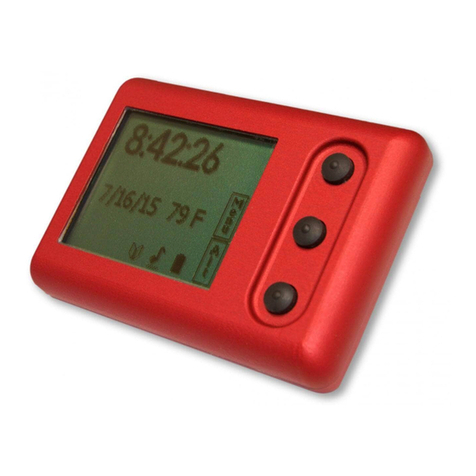
Atlas
Atlas Alti-2 user manual
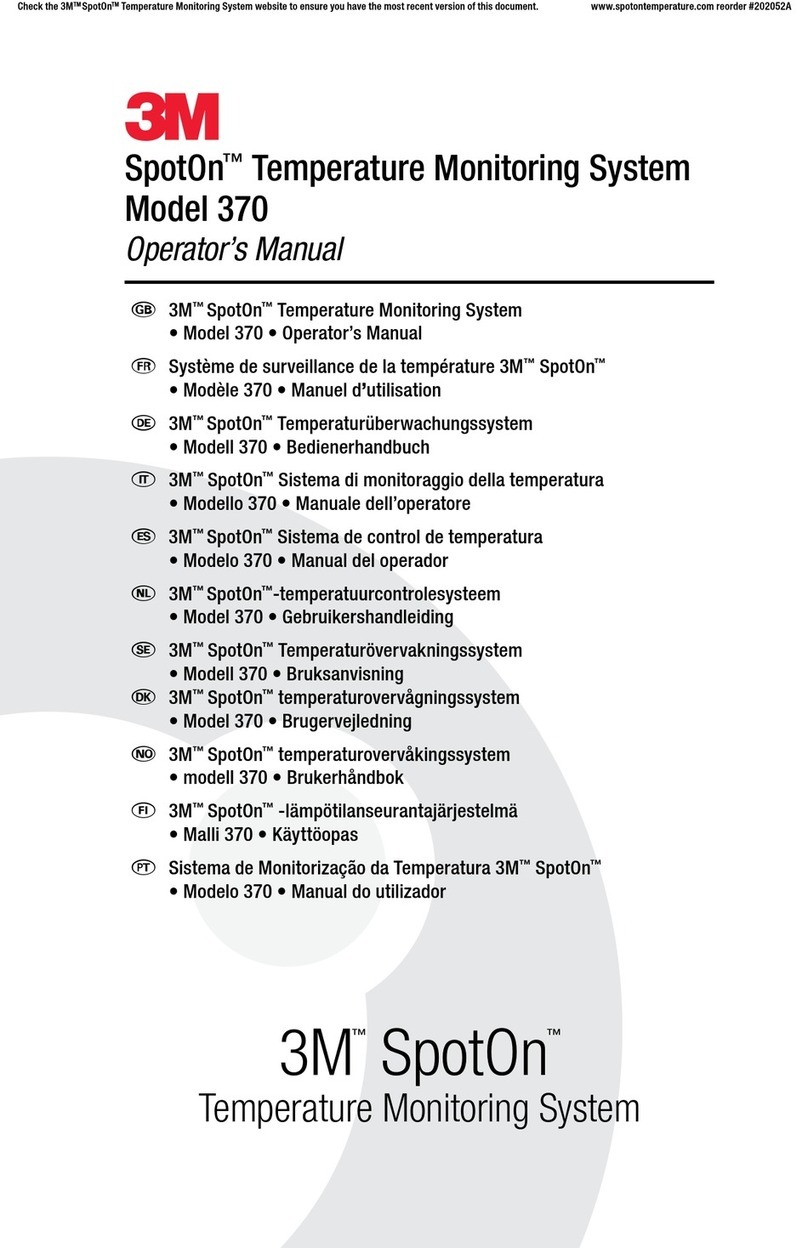
3M
3M SpotOn 370 Operator's manual
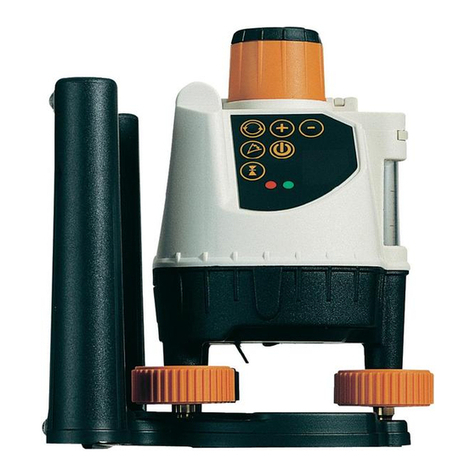
LaserLiner
LaserLiner BeamControl-Master BCM operating instructions
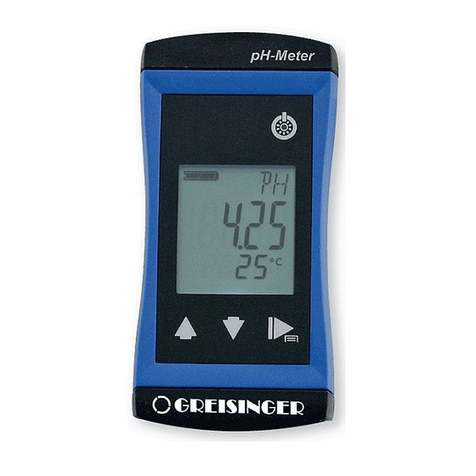
GREISINGER
GREISINGER G 1400 Series Quick reference guide
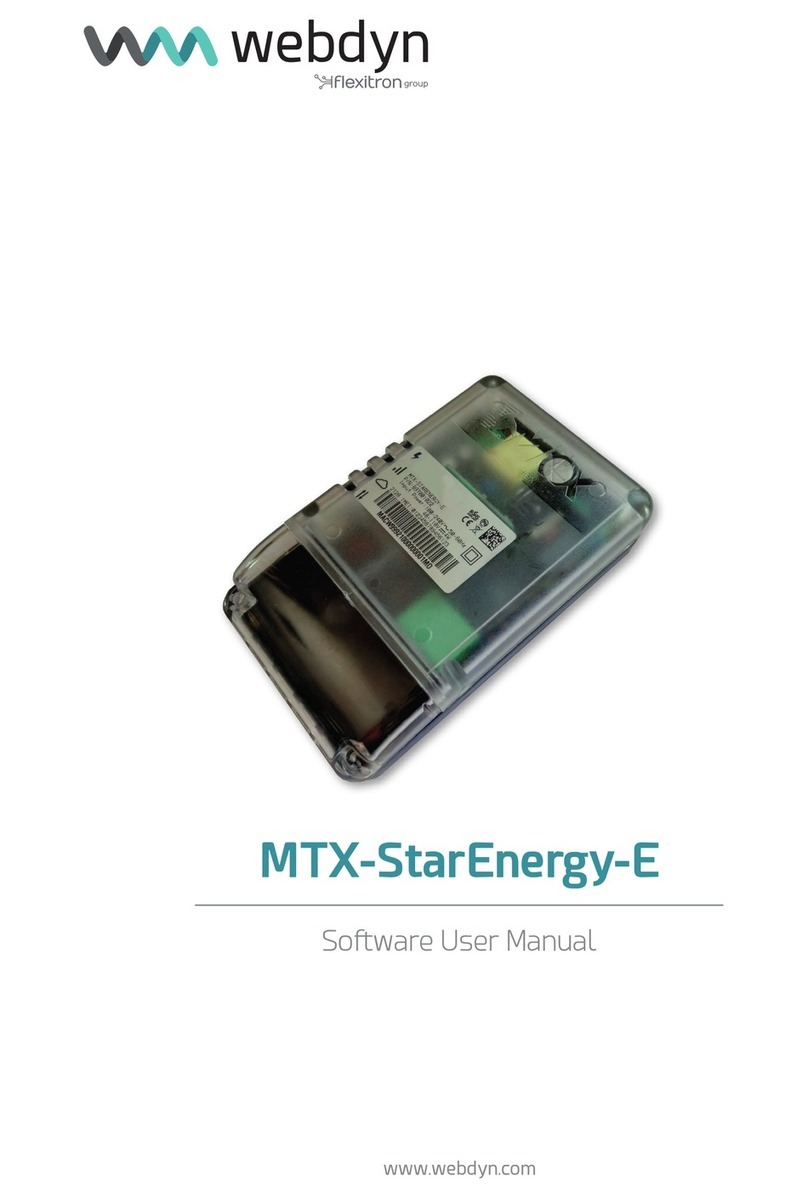
Flexitron
Flexitron webdyn MTX-StarEnergy-E Software user manual
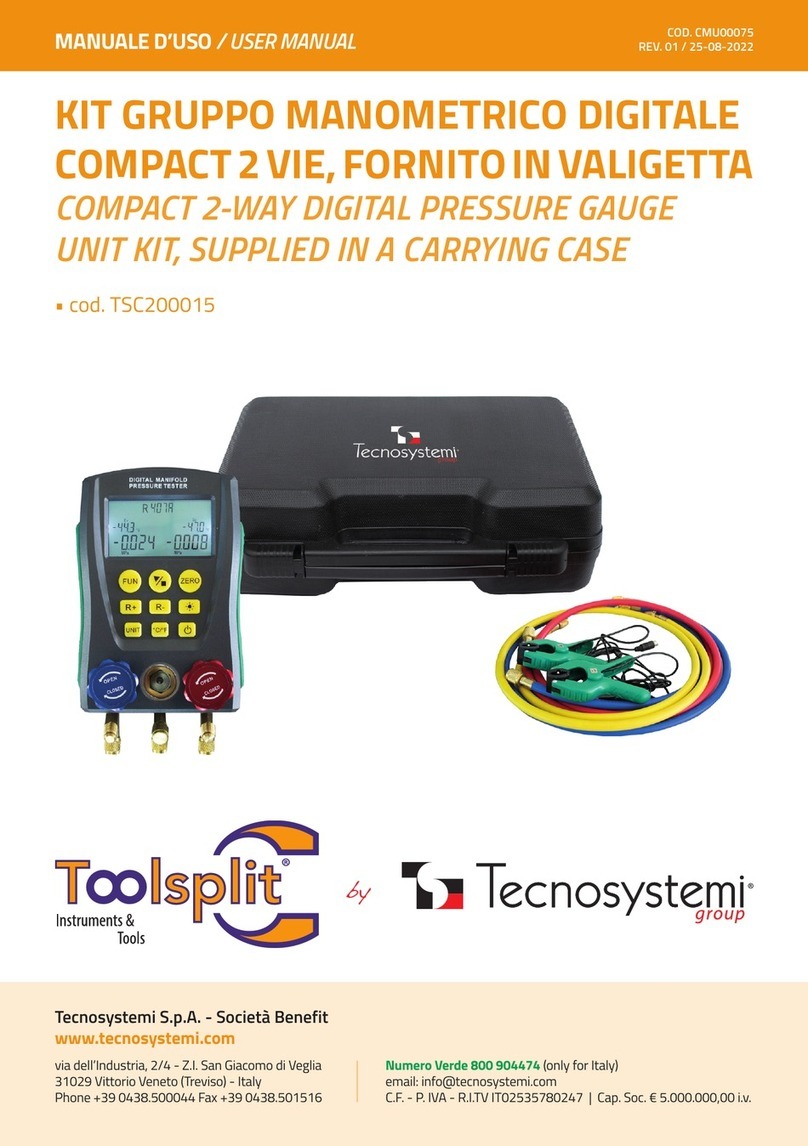
Tecnosystemi
Tecnosystemi Toolsplit TSC200015 user manual
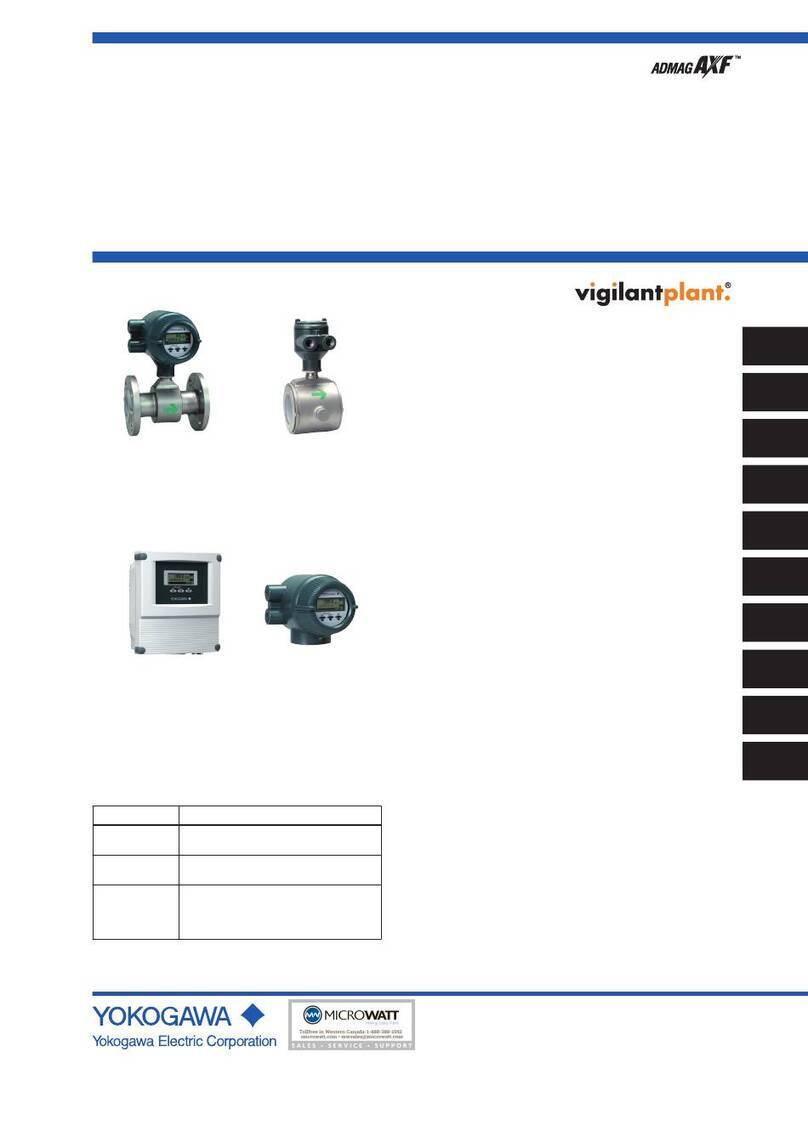
YOKOGAWA
YOKOGAWA AXF series user manual
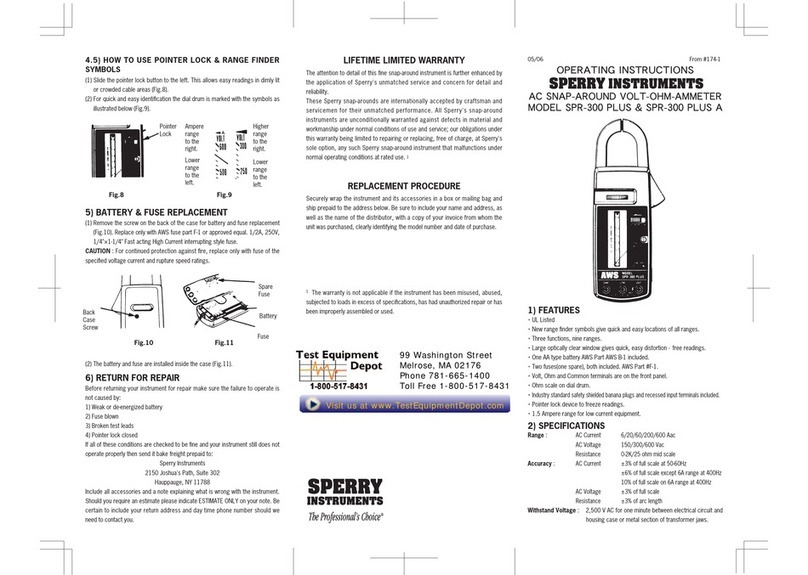
Sperry instruments
Sperry instruments SPR-300 PLUS A operating instructions

WATANABE ELECTRIC INDUSTRY
WATANABE ELECTRIC INDUSTRY WPMZ-1 Series Quick instruction manual
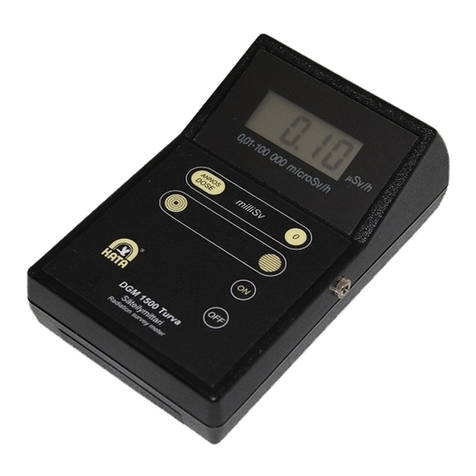
KATA
KATA DGM-1500 Turva manual

KROHNE
KROHNE SD 200 W quick start
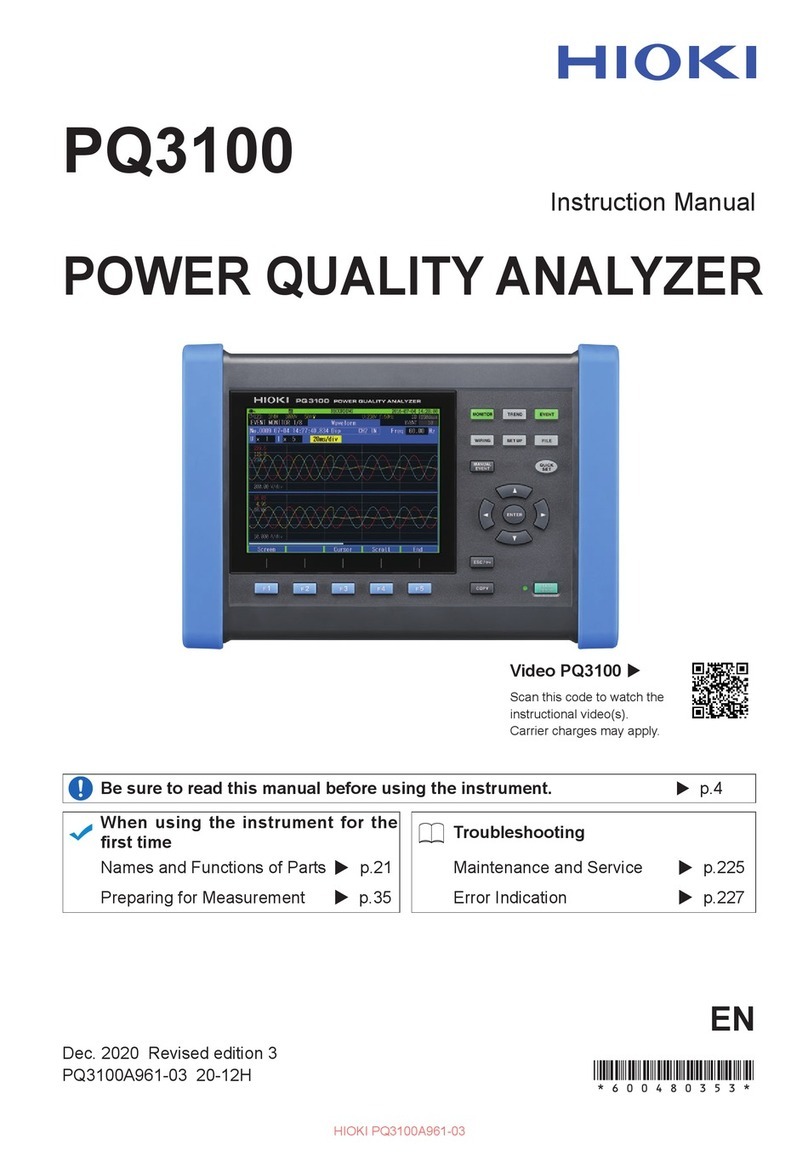
Hioki
Hioki PQ3100-91 instruction manual




